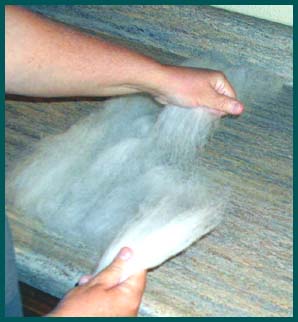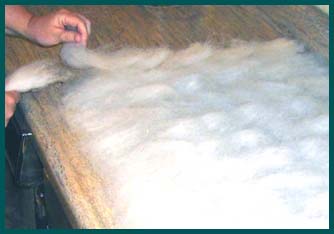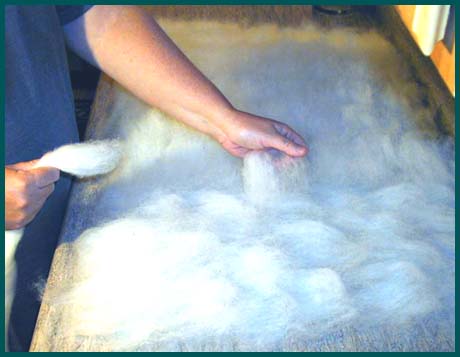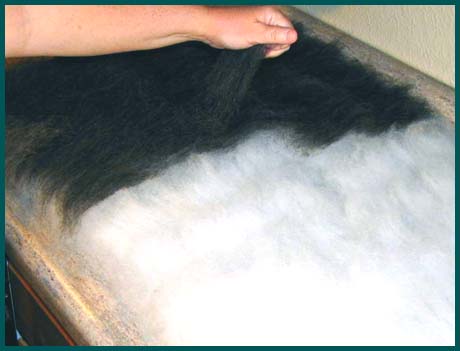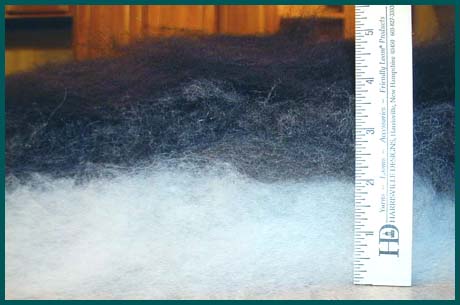I like to work on my kitchen counter, so am limited in the size of felt I can make. If you want to work larger, then you must use a larger table, rubber tray (the kind used as an automobile oil drip pan) or whatever surface you prefer.
You can use wool roving or batts or any form of washed and carded wool.
Begin by pulling off thin handfuls of the wool and laying them out with all of the wool going in the same direction.
